Theo Sulphate
Member
Looking at some ~4x4" proof prints, made by a lab that does excellent work, I got the impression the images from my Nettar were soft. Ever since I got the camera about 18 months ago, the images always seemed soft. So I scanned the negatives at 4800x4800 dpi and the images I saw on the screen were only slightly better than the prints.
Maybe I'm expecting too much, but I've seen posts which mention the quality of the images produced by this camera (the lens is a 75mm f/4.5 Novar-Anastigmat).
So here are some samples below. The film I'm using is Portra 160 NC; it's about 18 months past its expiration date, but it's been kept in the refrigerator the whole time.
This first photo, just to give some context, is from an entire 6x6cm image reduced to 12% of its original size:
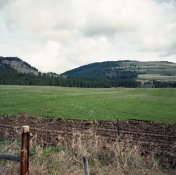 (yeah, there's dust... actually, the more I look at this one, the nicer it gets)
(yeah, there's dust... actually, the more I look at this one, the nicer it gets)
Again, this is just to show you the scene. I made this photo at f/11 at 1/100 second, hand held, and focus was at infinity. Now, going to 23% on the original scanned image, I present this crop of the distant hills:
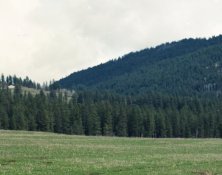
The trees in the foreground seem acceptable, but the trees on the hills look soft. Maybe its color fringing and if I'd make a B&W photo they'd be much sharper.
What really puzzles me is that (referring back to the original photo) in the foreground the weeds and tractor-tread marks in the soil seem sharper than I would expect from infinity focus:

This was also at 24%.
Here is a different photo with the same exposure settings and infinity focus, cropped at 12%:
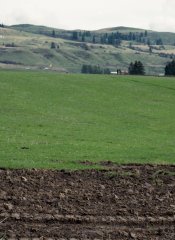
and another at 24%:
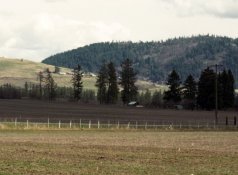
So am I expecting to see too much detail at infinity, especially with color film?
Since making these photos, I've just completed a test roll, with exposure combinations made at three different distances, at three different apertures, all from a steady rest. However, I shot the same Portra 160 NC film.
This camera is so much fun to take on trips and use that I want to find the optimal apertures and distances - or maybe I just need to adjust my expectations.
What say you?
Maybe I'm expecting too much, but I've seen posts which mention the quality of the images produced by this camera (the lens is a 75mm f/4.5 Novar-Anastigmat).
So here are some samples below. The film I'm using is Portra 160 NC; it's about 18 months past its expiration date, but it's been kept in the refrigerator the whole time.
This first photo, just to give some context, is from an entire 6x6cm image reduced to 12% of its original size:
 (yeah, there's dust... actually, the more I look at this one, the nicer it gets)
(yeah, there's dust... actually, the more I look at this one, the nicer it gets)Again, this is just to show you the scene. I made this photo at f/11 at 1/100 second, hand held, and focus was at infinity. Now, going to 23% on the original scanned image, I present this crop of the distant hills:

The trees in the foreground seem acceptable, but the trees on the hills look soft. Maybe its color fringing and if I'd make a B&W photo they'd be much sharper.
What really puzzles me is that (referring back to the original photo) in the foreground the weeds and tractor-tread marks in the soil seem sharper than I would expect from infinity focus:

This was also at 24%.
Here is a different photo with the same exposure settings and infinity focus, cropped at 12%:

and another at 24%:

So am I expecting to see too much detail at infinity, especially with color film?
Since making these photos, I've just completed a test roll, with exposure combinations made at three different distances, at three different apertures, all from a steady rest. However, I shot the same Portra 160 NC film.
This camera is so much fun to take on trips and use that I want to find the optimal apertures and distances - or maybe I just need to adjust my expectations.
What say you?
Last edited:








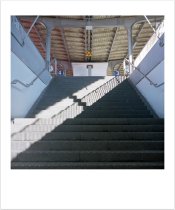
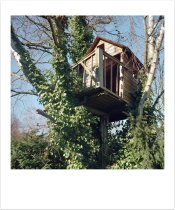

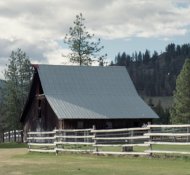
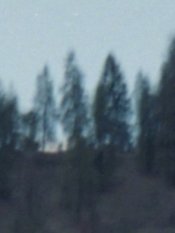
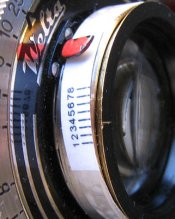

 .
. 


